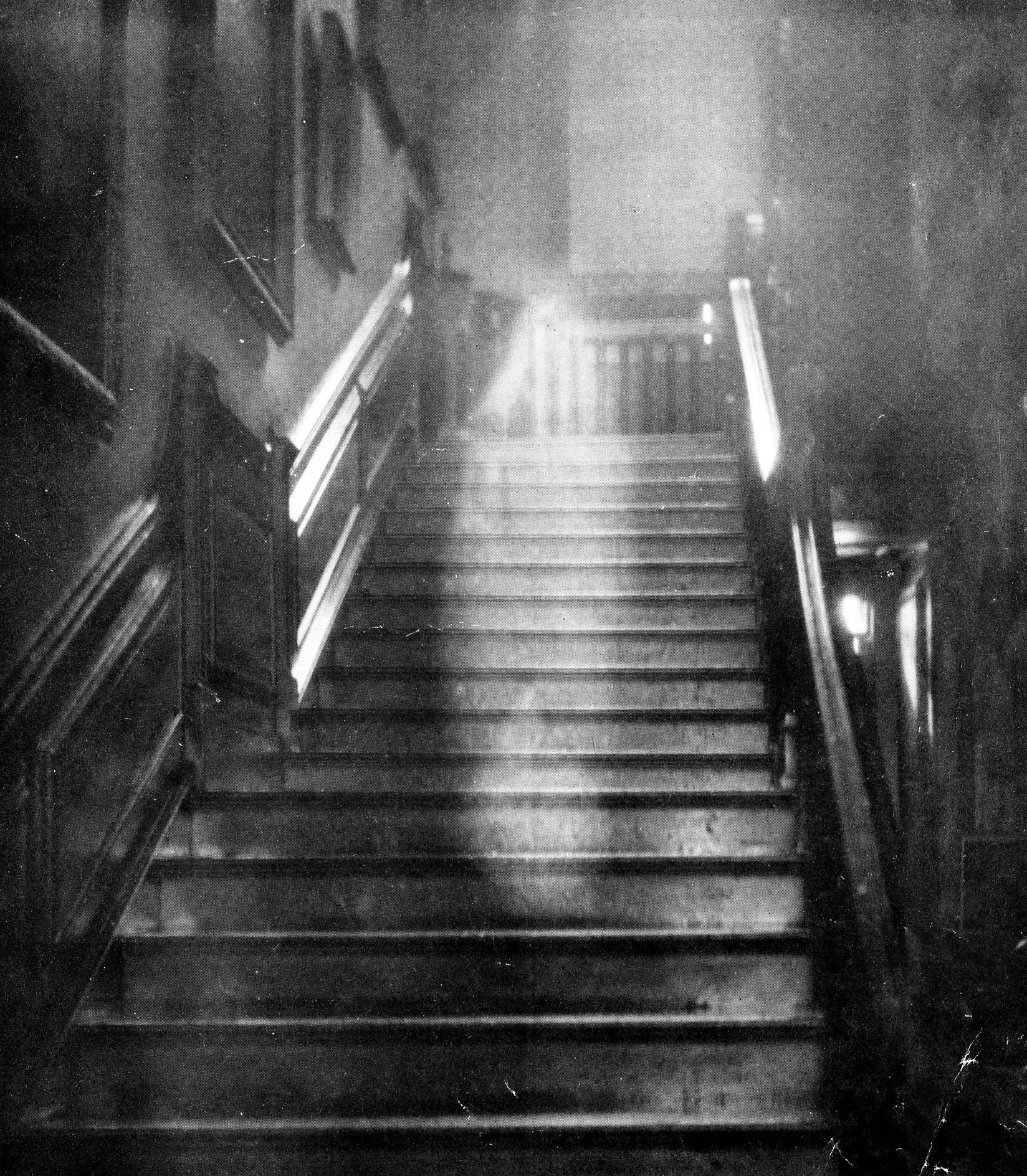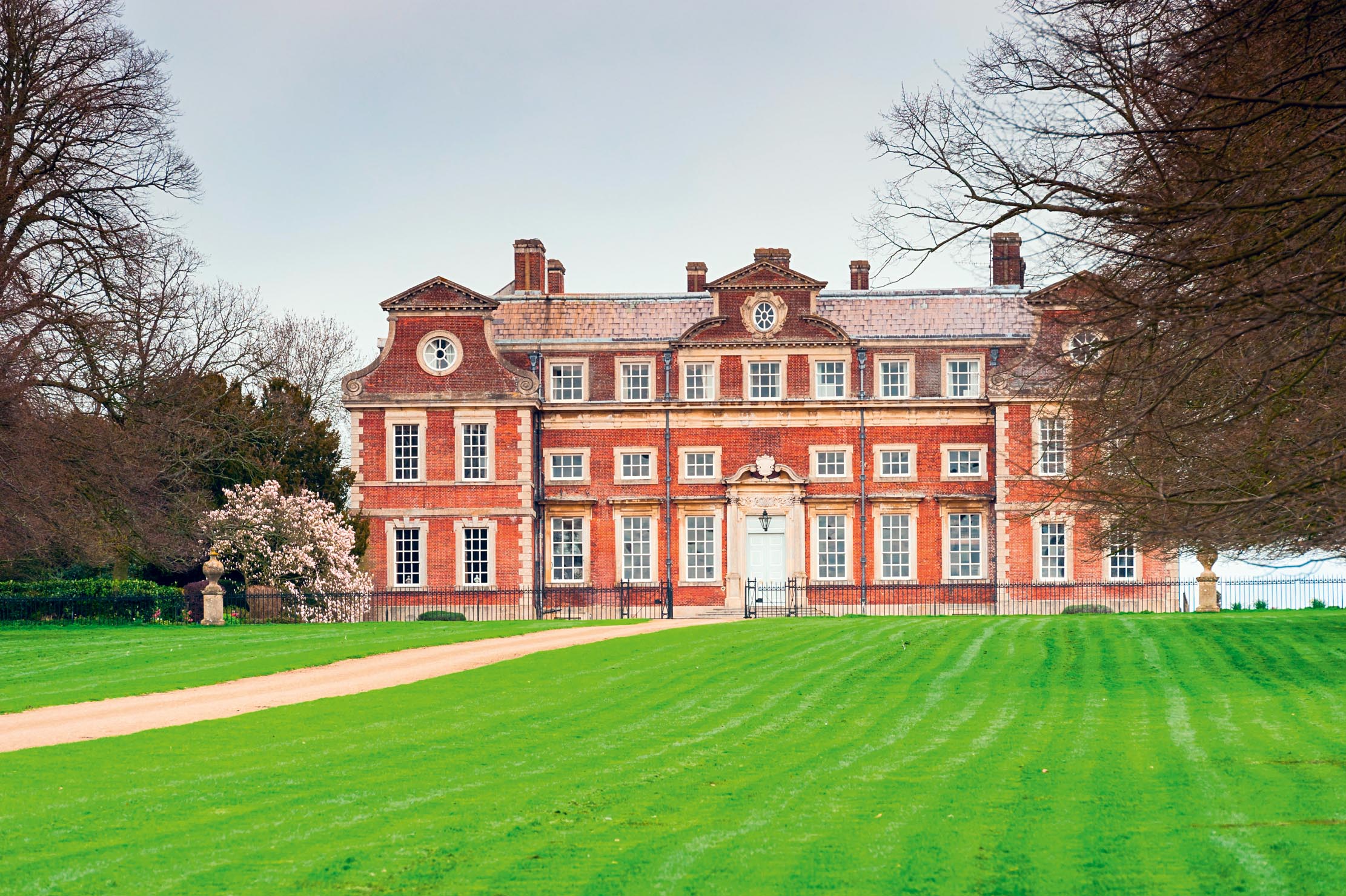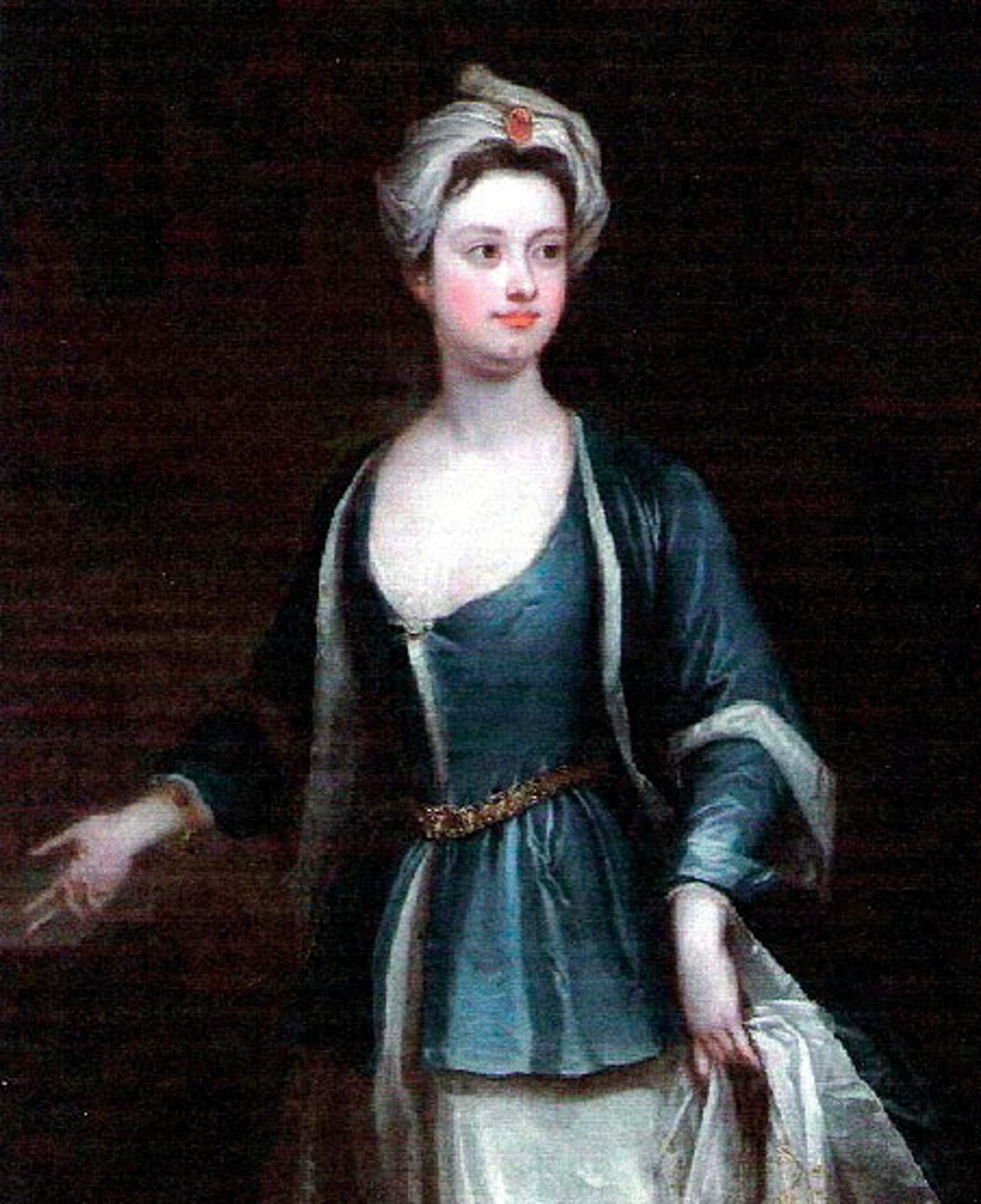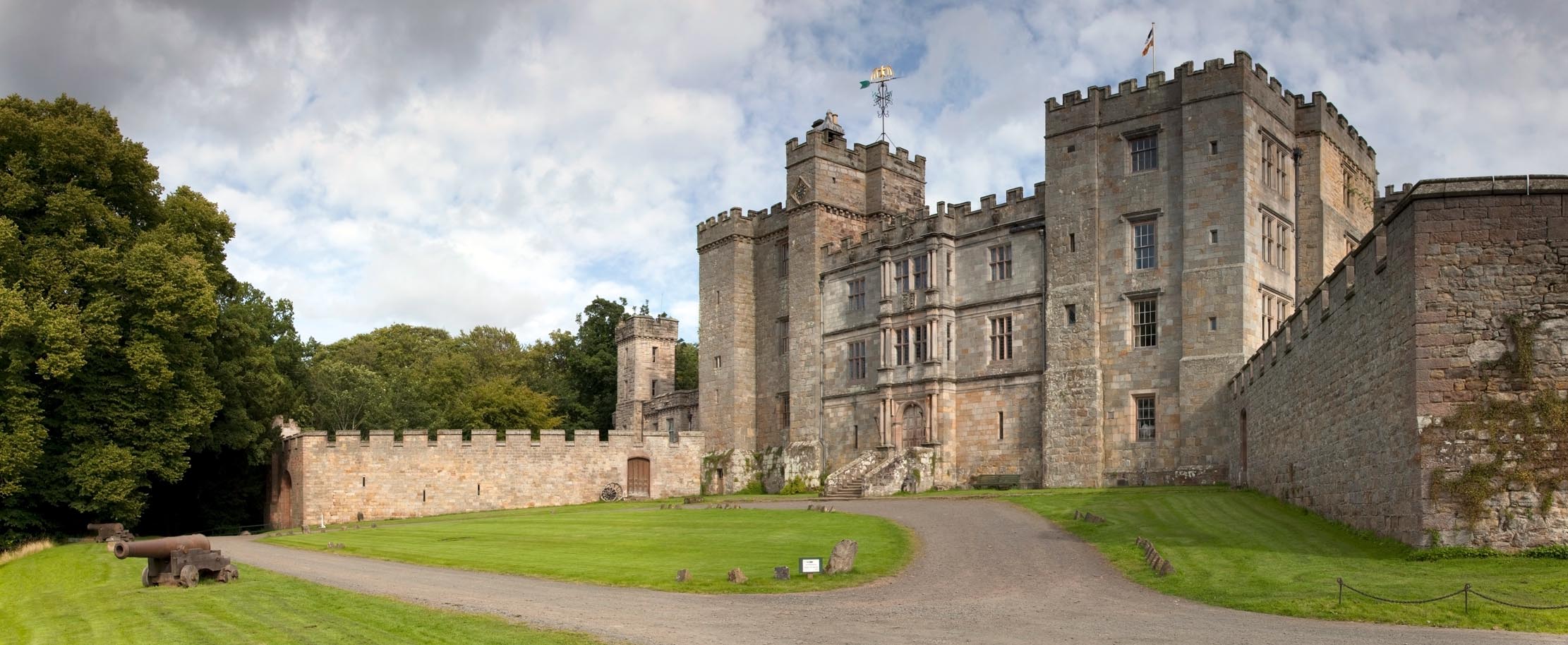The day a Country Life photographer captured an image of a ghost, a picture that's become one of the most famous 'spirit photography' images of all time
Some 85 years ago, a picture of the fabled ‘Brown Lady’ of Raynham was taken by Country Life photographers. Was it really the ghost of Lady Dorothy Walpole, an 18th-century mistress of the manor? Caitlin Blackwell Baines takes a look, and tells tales of how many struggling country house owners have found that ghosts help them to stay connected to a more illustrious past.


On September 19, 1936, Country Life photographers on assignment at Raynham Hall in Norfolk took what is probably history’s most famous example of ‘spirit photography’. The ethereal, veiled form they captured gliding down the hall’s main staircase is widely believed to be the fabled ‘Brown Lady’ of Raynham — the ghost of Lady Dorothy Walpole, an 18th-century mistress of the manor.
Readers may be familiar with this image, but most will not know that, less than a year before it was taken, the incumbent lady of the house, Gwladys, Dowager Marchioness Townshend published a book of ‘true’ ghost stories. She wrote: ‘I must confess I believe in ghosts and I have for many years lived in a definitely haunted house.’ She was neither the first aristocratic homeowner to hold such beliefs, nor the first to write about them.
Two hundred miles north of Raynham is Chillingham Castle in Northumberland, the former home of American-born Countess Leonora Tankerville. Lady Leonora began documenting spectral sightings at her 13th-century home as early as 1895. In fact, her first supernatural experience of the aptly named Chillingham came in a dream, months before she took up residence.
In the dream, Lady Leonora’s deceased brother-in-law (whom she had never met, but recognised from photographs) greeted her at the gates of her soon- to-be home. When she finally visited the place in the flesh, she mused: ‘This is the second time I find myself approaching the gates of Chillingham Castle but strangely, it’s the first time I have actually been here.’ By 1925, she had amassed enough material to fill an entire guidebook.
For both women, an interest in the supernatural was in keeping with the contemporary fashion for spiritualism. Yet, they had a special investment in ghosts, particularly the ones associated with their own homes. This was an age in which a pall of loss and decay hung over many formerly splendid residences and, for struggling owners, a haunted history was one way to stay connected to an illustrious past.

At its apogee in the 18th century, redbrick Raynham Hall was renowned for its innovative architecture, lavish art collection and powerful owner. Originally constructed in the early 1600s, the house was expanded a century later by the famed Palladian architect William Kent under the direction of Charles, 2nd Viscount Townshend, then leader of the House of Lords. By the end of the 19th century, however, Raynham had fallen on hard times. A major agricultural depression, combined with the spendthrift habits of its owners, led to Raynham’s fin-de-siecle downfall.
In 1899, John, 6th Marquess Townshend inherited a bankrupt estate, forcing him to sell off the family art collection, rent out the hall and find a rich wife — which he did in August 1905, marrying Gwladys Sutherst, the daughter of a successful lawyer. It wasn’t until after the Marquess’s death, in 1921, that the Townshend family returned to its seat and the Dowager Marchioness took on the onerous task of restoring Raynham. No doubt she was regaled from the start with tales of the former lady of the house, who, rumour had it, remained in residence.
Sign up for the Country Life Newsletter
Exquisite houses, the beauty of Nature, and how to get the most from your life, straight to your inbox.
The story goes that Lady Dorothy — sister of Robert Walpole — endured an unhappy marriage to the 2nd Viscount Townshend. Some say she was unfaithful, whereas others claim it was her extravagant spending that incurred the Viscount’s wrath. Whatever the case, she apparently died under mysterious circumstances and continued to roam Raynham.
The first documented sighting of Lady Dorothy occurred in 1835. A visitor, a Maj Loftus, said he saw a shadowy woman in an old-fashioned brown dress, with hollow sockets for eyes. The next year, Capt Frederick Marryat, a friend of Charles Dickens, purportedly fired his pistol at the ‘Brown Lady’, leaving a bullet lodged in the doorframe behind her translucent form. Sightings continued well into Gwladys’s time, with her own son, George, and a friend claiming to have ‘met a lady on the staircase, who not only frightened but puzzled them because… they could see the stairs through her’.

Armed with these colourful anecdotes, the Dowager Marchioness conceived an unusual scheme to help revive the reputation of Raynham: she would write a book about haunted houses, in which her own home took centre stage. True Ghost Stories (1936), a compilation of 32 tales, began with Raynham. More than a rehashing of the ‘Brown Lady’ legend, it also served as a reminder of Raynham’s architectural grandeur and connection to important historical personages (including the 1st Duke of Monmouth, another reported ghostly resident). An unorthodox, yet successful publicity stunt, the story (coupled with the Country Life photograph) helped put the house back on the cultural map.
In Northumberland, Lady Leonora was growing accustomed to her exotic new abode, Chillingham, a medieval stronghold-turned-country house near the Scottish border. The place must have come as a shock to Leonora van Marter, a music teacher who had lived a relatively ordinary life in America before she met her husband, George Bennet, the future 7th Earl of Tankerville, in New York in 1894.
The castle to which Bennet brought his bride was in shabby condition. Evidence remained of the extravagant sums that had once been spent on Chillingham in anticipation of royal visits — namely the construction of the Great Hall in honour of James VI in 1603 and its lavish redecoration two centuries later for the future Edward VII — but, after more than 150 years of peace with Scotland, the castle was no longer strategically significant. It was now simply a remote and impractical family home, with dungeons in place of water closets and arrow slits instead of bow windows.
Lady Leonora’s diary entries documenting her early days at Chillingham paint a picture of an anxious new wife in a foreign environment. She suffered damp weather, unusually heavy English breakfasts and long, lonely nights in her bedroom, as the men of the house conversed in the lounge into the early hours. But she did have one way of keeping herself entertained: ghost-hunting. ‘All afternoon I have been visiting the locations of ghost sightings according to the old housekeeper,’ Lady Leonora wrote on her second day. ‘I had no idea there could be so many apparitions living under one roof.’

There was the ghost of an old woman, believed to be a victim of poisoning or plague, who frequently appeared begging for water; an apparition of a radiant blue child; and the wafting aroma of rosewater, believed to be the calling card of the ‘Grey Lady’, another 18th-century scorned wife, Mary Berkeley. All of this provided excellent fodder for Lady Leonora’s 1925 book, The Ghosts of Chillingham Castle. It’s unclear for whom the ghost guide was written. It seemed to address an audience of visitors, yet it’s hard to imagine the remote castle received many visitors in its author’s day — nor, indeed, for a long time afterwards.
Following her husband’s death in 1931, Lady Leonora abandoned Chillingham, leaving it vacant for 50 years, until it was purchased by the present owner, Sir Humphry Wakefield. Sir Humphrey quickly recognised the potential of its haunted history. Today, he markets Chillingham as the ‘most haunted castle in England’, open six months out of 12 for candle-lit ‘ghost tours’ and spooky overnight stays. It hosts some 20,000 visitors a year.
Raynham, meanwhile, seems to shy away from its haunted reputation. On the handful of days it opens to the public, visitors are encouraged to explore its architectural wonders, rather than its supernatural ones.
Haunted houses to visit in Britain
Raynham Hall, Norfolk, and Chillingham Castle, Northumberland, are two examples of the scores of reputedly haunted country houses across Britain, many of which are open to the public. Here are some of the others:
- The National Trust identifies Blickling Hall (Norfolk), Buckland Abbey (Devon) and Ham House (Surrey) as among its most haunted properties, but many more have associated ghost stories
- English Heritage lists Warkworth Castle (Northumberland), Framlingham Castle (Suffolk) and Bolsover Castle (Derbyshire) as its most haunted sites. At Bolsover, guests can record their experiences in a special ‘ghost book’
- Several private estates offer ‘ghost tours’, including Chillingham, Muncaster Castle (Cumbria) and Llancaiach Fawr Manor (Wales)
Country Life is unlike any other magazine: the only glossy weekly on the newsstand and the only magazine that has been guest-edited by HRH The King not once, but twice. It is a celebration of modern rural life and all its diverse joys and pleasures — that was first published in Queen Victoria's Diamond Jubilee year. Our eclectic mixture of witty and informative content — from the most up-to-date property news and commentary and a coveted glimpse inside some of the UK's best houses and gardens, to gardening, the arts and interior design, written by experts in their field — still cannot be found in print or online, anywhere else.
-
 Why British designers dream up the most desirable hotels
Why British designers dream up the most desirable hotelsWhen it comes to hotel design, the Brits do it best, says Giles Kime.
By Giles Kime Published
-
 The five minute guide to 'The Great Gatsby', a century on from its publication
The five minute guide to 'The Great Gatsby', a century on from its publication'The Great Gatsby' sold poorly the year it was published, but, in the following century, it went on to become a cornerstone of world literature.
By Carla Passino Published